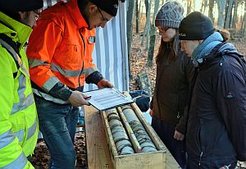Research on clean drinking water

In this country, we take clean drinking water for granted. At least 4.5 billion cubic metres are used in Germany each year – equivalent to some 120 litres per person per day. More than two-thirds of this total comes from groundwater. But how secure are these essential subsurface water reservoirs in view of intensive land use, environmental pollution and climate change? Researchers at Friedrich Schiller University in Jena, Max Planck Institute for Biogeochemistry (MPI-BGC), Leibniz Institute of Photonic Technology (IPHT), and Helmholtz Centre for Environmental Research (UFZ) are looking into this issue in the Collaborative Research Centre (CRC) ‘AquaDiva’. Started in 2013, the research partnership will continue to be supported by the German Research Foundation (DFG) for the next four years, receiving over 9.5 million euros for the funding period to 2021.
‘AquaDiva’ stands for both water (‘Aqua’) and diversity (‘Diva’). Researchers are focusing in particular on what is called the ‘critical zone’, which extends from the near-surface atmosphere down to the bottom of groundwater aquifers. “This habitat has still hardly been investigated,” explains Prof. Susan Trumbore, Managing Director of the MPI-BGC and also a CRC speaker. However, it is precisely the interaction between this life below the surface and the physical and geochemical conditions underground that has a decisive influence on the quality of the groundwater.












